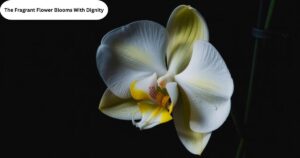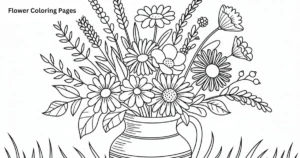Peonies are breathtaking perennials known for their lush blooms and stunning color transformations throughout the seasons. From vibrant spring shades to soft summer pastels and antique autumn hues, these flowers undergo a natural fading process influenced by sunlight, temperature, and age.
Understanding how peonies fade can enhance garden planning and help gardeners preserve their beauty longer. Whether you’re growing them for their bold spring colors or their delicate fading tones, appreciating their seasonal shifts adds a new level of charm to these timeless blooms.
Read More: What Are the Water Requirements for Peonies?
How Peony Colors Change Over Time
Peonies change colors due to natural aging, temperature shifts, and sun exposure. As flowers mature, pigments break down, causing a gradual shift from bold to softer hues. Some peonies even display multi-stage color changes, starting in one shade and fading into another.
Factors like sunlight, temperature, and soil pH significantly impact this transformation. Warmer climates can accelerate fading, while cooler temperatures help preserve richer tones. Peonies grown in slightly acidic soil may retain deeper colors compared to those in alkaline soil.
Spring: Vibrant Peony Blooms at Their Peak
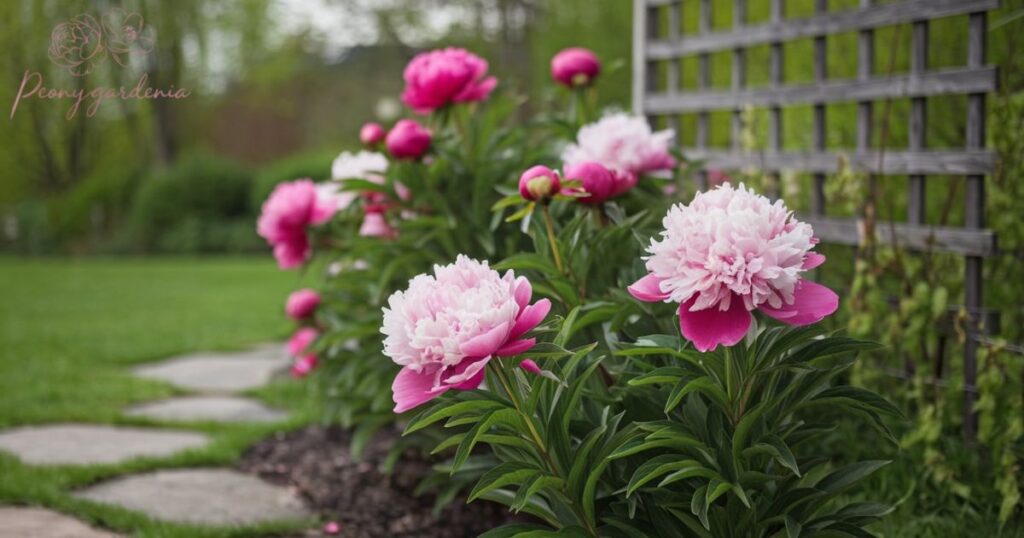
Spring is when peonies burst into full color, displaying shades of pink, red, white, coral, and yellow. This is their most brilliant and intense stage, making them a highlight of spring gardens.
Different varieties start with bold, striking hues. For example, Coral Charm peonies open in bright coral, while Bowl of Beauty peonies feature deep pink petals with a yellow center. This fresh and vivid appearance lasts for weeks before subtle fading begins.
Early Summer: Subtle Changes in Peony Petals
As summer begins, peony blooms soften in color, moving from their initial vibrancy to muted and pastel tones. This is a natural part of their life cycle, caused by petal aging and prolonged sun exposure.
Deep pinks often fade to soft blush, while reds mellow into pastel peach. White peonies may take on a creamy ivory hue, creating a more delicate, dreamy appearance. Though less vivid, their charm remains intact.
Mid to Late Summer: Soft Pastels and Creamy Tones
By mid-summer, peonies enter their final bloom phase, with colors fading into even lighter shades. Their petals, once saturated with color, start to appear pale and translucent.
White peonies may lose their crisp brightness, turning into a soft butter or antique ivory tone. Pink varieties often shift to almost-white hues before petals begin to fall. Though fading, their graceful appearance still adds beauty to the garden.
Autumn: Fading and Drying Colors in Peonies
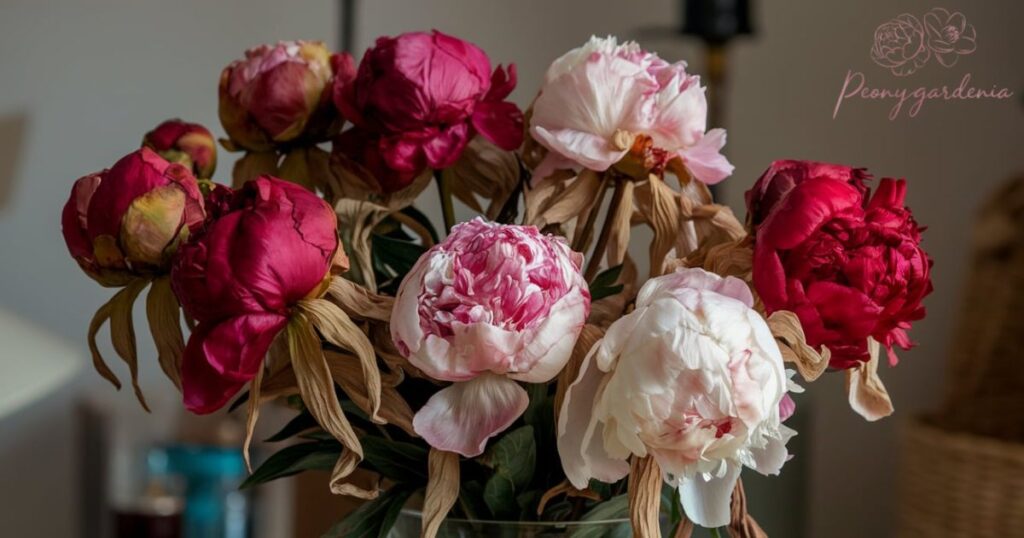
By autumn, peony blooms lose their softness and take on antique, vintage hues. Petals start to dry, curling at the edges while transitioning to light brown, beige, or dusty rose shades.
At this stage, the flowers may retain their form but appear faded, giving a rustic charm to garden beds. While the blooms decline, their foliage remains attractive, adding depth to fall landscapes.
Winter: Peony Dormancy and Foliage Color Shifts
In winter, peony plants enter dormancy, with their leaves and stems undergoing a dramatic color transformation. As temperatures drop, green foliage turns into shades of yellow, bronze, or deep burgundy before eventually dying back.
This color shift is a natural response to cold weather, signaling the plant to conserve energy for the next blooming season. Though bare in winter, peonies are storing strength underground, preparing to bloom again in spring.
Which Peony Varieties Show the Most Dramatic Color Fades?
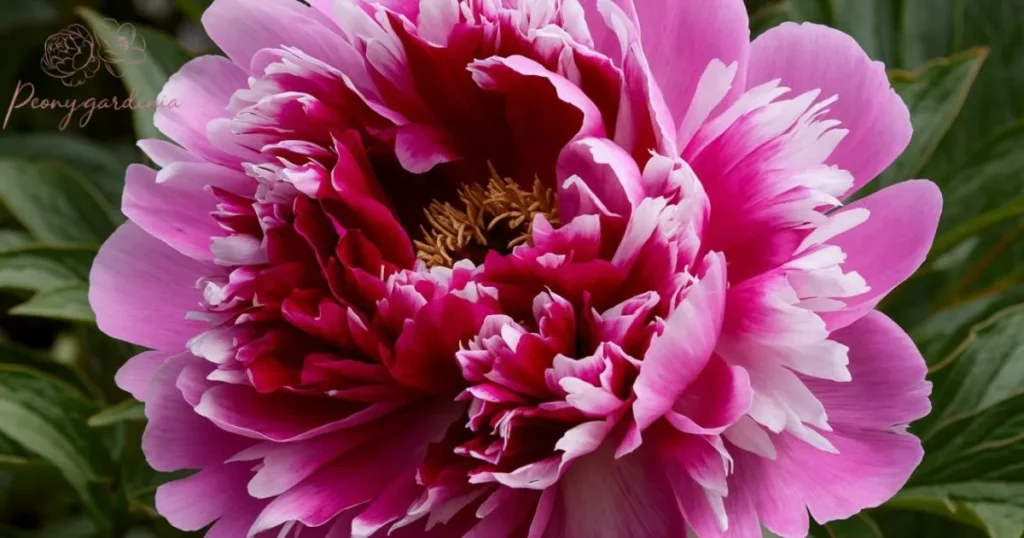
Certain peony varieties are known for their dramatic color transformations. The Coral Charm peony starts as a bold coral and fades into soft peach and cream. Similarly, Bowl of Beauty peonies transition from deep pink to pale blush over time.
Hybrid peonies often show more noticeable fading than traditional ones. Some varieties, like Pink Hawaiian Coral, can lose up to 50% of their initial color intensity by mid-summer. Choosing the right variety ensures a more dynamic color display throughout the seasons.
Tips for Preserving Peony Colors Longer
To slow down peony fading, provide partial shade during peak sun hours. Direct sunlight accelerates pigment breakdown, so planting in a spot with morning sun and afternoon shade helps maintain vibrant hues.
Mulching and proper watering also prolong color intensity. Avoid overwatering, as excess moisture can weaken petal structure, making them fade faster. For long-term beauty, cut and dry peonies early to preserve their soft pastels indoors.
Conclusion
Peonies offer a stunning seasonal color journey, moving from bold spring hues to soft summer pastels, then antique autumn tones before winter dormancy. Each phase highlights a different aspect of their beauty, making them a timeless favorite in gardens.
Embracing peony color changes allows gardeners to appreciate their natural evolution. Instead of resisting fading, celebrate it as part of their unique charm, ensuring a garden that’s beautiful year-round.
FAQs
Why do peonies change color as they age?
Peonies fade due to natural pigment breakdown, sunlight exposure, and temperature shifts.
Which peony varieties have the most noticeable color changes?
Coral Charm, Bowl of Beauty, and Pink Hawaiian Coral are known for dramatic fading.
How can I slow down peony color fading?
Provide partial shade, proper watering, and mulch to extend their vibrant hues.
Do all peonies fade to lighter shades?
Most do, but some dark varieties retain deep tones longer in cooler climates.
Can I preserve peony colors after cutting?
Yes, by drying them early or keeping cut blooms in cool water indoors.



